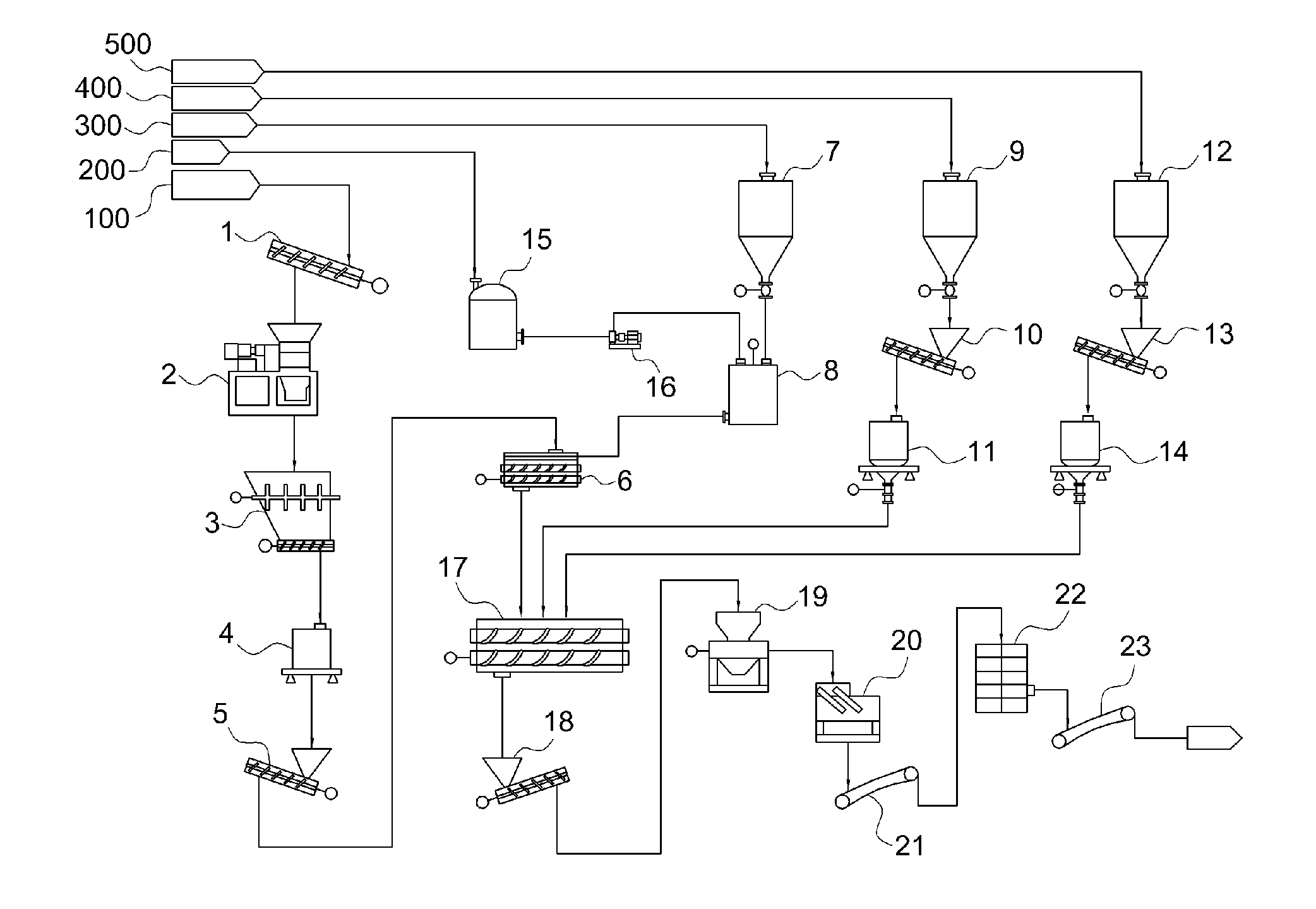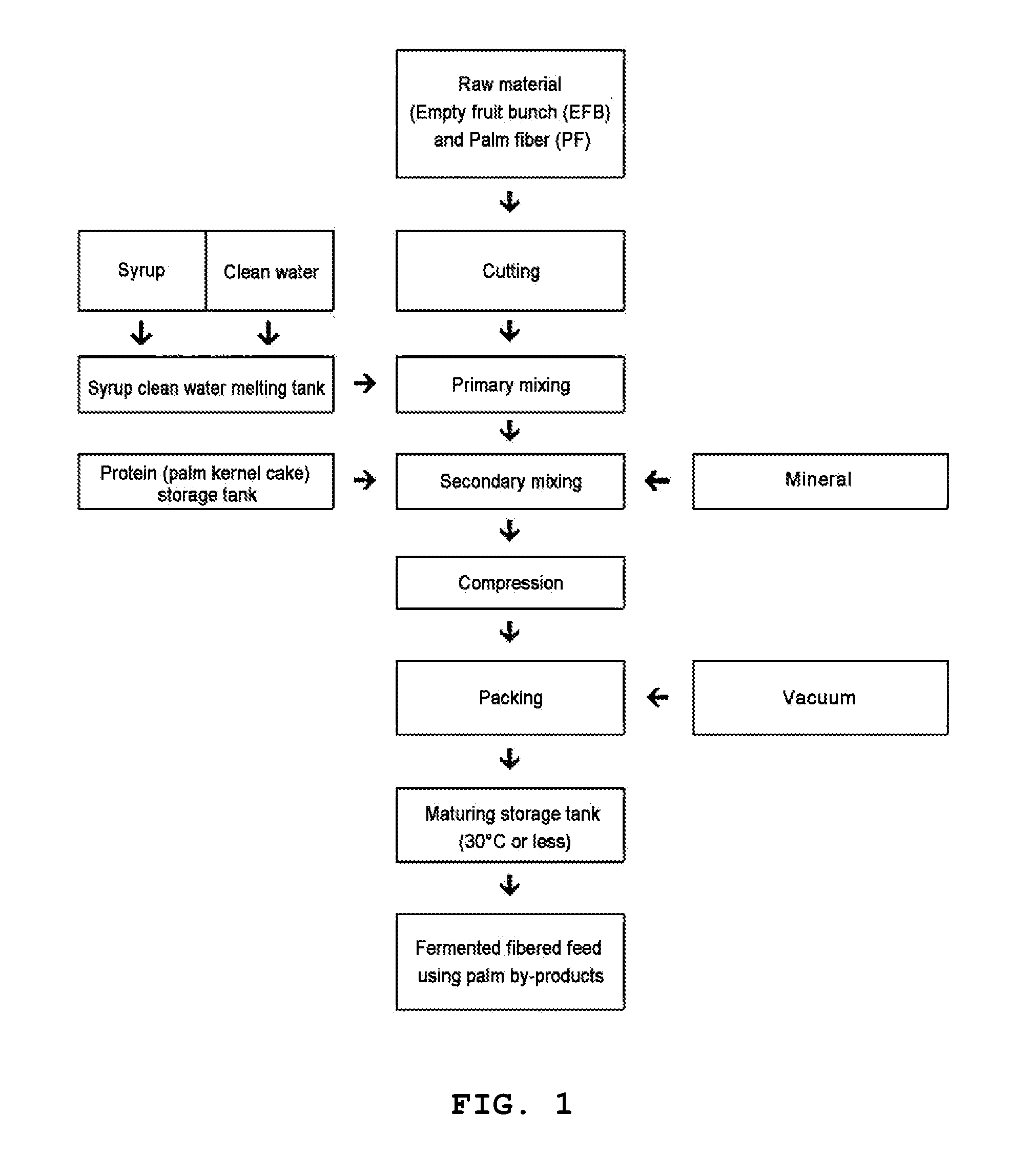Equipment and method for producing fiber feed by using palm-processing by-products
a palm processing and by-product technology, applied in the field of development of fermented fibered feed, can solve the problems of large space and time, difficulty in utilizing by-products, and high cost of conveying, and achieve stably and continuously processed, high economic efficiency, and significant reduction of storage space
- Summary
- Abstract
- Description
- Claims
- Application Information
AI Technical Summary
Benefits of technology
Problems solved by technology
Method used
Image
Examples
Embodiment Construction
[0062]Generally, when producing palm oil, empty fruit bunch (EFB), which is discharged after sterilizing it by injecting a high temperature of steam into fresh fruit bunch (FFB) and going through a palm oil removing process, and palm fiber (PF), which is generated after extracting oil from the palm, are discharged at a high temperature of approximately 100° C., and are finally discharged through the additional milling process to increase the amount of the oil extracted.
[0063]As such, the empty fruit bunch and the palm fiber, which are generated during the palm oil mill process, contain water in an amount of 60% or less, so it is very hard to maintain the activation of microorganism.
[0064]In addition, the content of non-structural carbohydrate capable of easily using by means of the microorganism is also low.
[0065]Further, since the empty fruit bunch and the palm fiber contain a high content of poly phenol (lignin), the paratability is reduced when livestock intakes them, and polyphe...
PUM
 Login to View More
Login to View More Abstract
Description
Claims
Application Information
 Login to View More
Login to View More - R&D
- Intellectual Property
- Life Sciences
- Materials
- Tech Scout
- Unparalleled Data Quality
- Higher Quality Content
- 60% Fewer Hallucinations
Browse by: Latest US Patents, China's latest patents, Technical Efficacy Thesaurus, Application Domain, Technology Topic, Popular Technical Reports.
© 2025 PatSnap. All rights reserved.Legal|Privacy policy|Modern Slavery Act Transparency Statement|Sitemap|About US| Contact US: help@patsnap.com



